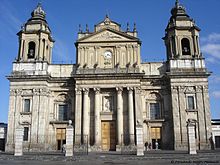
The predominant religion in Brazil is Christianity, with Catholicism being its largest denomination.

Christianity is the predominant religion in Mexico, with Catholicism being its largest denomination representing around 78% of the total population as of 2020. In recent decades the share of Catholics has been declining, due to the growth of other Christian denominations – especially various Protestant churches, Jehovah's Witness and Mormonism – which now constitute larger shares of the population. Conversion to non-Catholic denominations has been considerably lower than in Central America, and central Mexico remains one of the most Catholic areas in the world.

The Catholic Church in Guatemala is part of the worldwide Catholic Church, under spiritual leadership of the Pope, Curia in Rome and the Episcopal Conference of Guatemala. There are approximately 7.7 million Catholics in Guatemala, which is about 46% of the total population of 17.1 million citizens.

Christianity in Italy has been historically characterised by the dominance of the Catholic Church since the East–West Schism. However, the country is also home to significant Christian minorities, especially Orthodox Christians, Protestants and Jehovah's Witnesses.
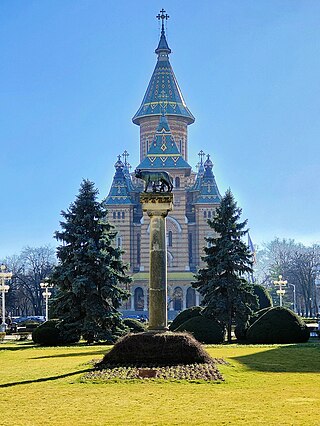
Christianity is the main religion in Romania, with Romanian Orthodoxy being its largest denomination.
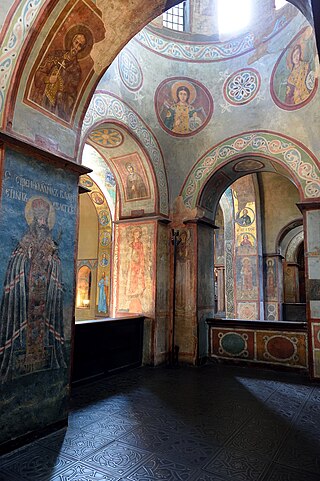
Christianity is the predominant religion in Ukraine, with 85% of the population identifying as Christian according to a 2022 survey conducted by the Kyiv International Institute of Sociology (KIIS). Seventy-two percent of the population avowed fidelity to an Eastern Orthodox Church: 54% of Ukrainians proclaimed adherence to the autocephalous Orthodox Church of Ukraine; 14% identified as Orthodox Christian without specifying a church affiliation; 4% associated with the Moscow Patriarchate. Another 9% of Ukrainians professed devotion to the Catholic Church in Ukraine: 8% Ukrainian Greek Catholics and 1% Latin Catholics. Two percent of the population declared affiliation to a mainstream Protestant Church, and a further 2% identified with some alternative sect of Christianity.

Christianity in France is the largest religion in the country. France is home to The Taizé Community, an ecumenical Christian monastic fraternity in Taizé, Saône-et-Loire, Burgundy. With a focus on youth, it has become one of the world's most important sites of Christian pilgrimage with over 100,000 young people from around the world converging each year for prayer, Bible study, sharing, and communal work.

Religion in Greece is dominated by Christianity, in particular the Greek Orthodox Church, which is within the larger communion of the Eastern Orthodox Church. It represented 90% of the total population in 2015 and is constitutionally recognized as the "prevailing religion" of Greece. Religions with smaller numbers of followers include Islam, Roman Catholicism, Greek Catholicism, Judaism, Evangelicalism, Hellenic paganism, and Jehovah's Witnesses. Also a small number of Greek atheists exist, not self-identifying as religious. Religion is key part of identity for most Greeks, with 76% of Greeks in a 2015–2017 survey saying that their nationality is defined by Christianity. According to other sources, 81.4% of Greeks identify as Orthodox Christians and 14.7% are atheists.

Christianity is the most prevalent religion in the United States. Estimates from 2021 suggest that of the entire U.S. population about 63% is Christian. The majority of Christian Americans are Protestant Christians, though there are also significant numbers of American Roman Catholics and other Christian denominations such as The Church of Jesus Christ of Latter-day Saints, Orthodox Christians and Oriental Orthodox Christians, and Jehovah's Witnesses. The United States has the largest Christian population in the world and, more specifically, the largest Protestant population in the world, with nearly 210 million Christians and, as of 2021, over 140 million people affiliated with Protestant churches, although other countries have higher percentages of Christians among their populations. The Public Religion Research Institute's "2020 Census of American Religion", carried out between 2014 and 2020, showed that 70% of Americans identified as Christian during this seven-year interval. In a 2020 survey by the Pew Research Center, 65% of adults in the United States identified themselves as Christians. They were 75% in 2015, 70.6% in 2014, 78% in 2012, 81.6% in 2001, and 85% in 1990. About 62% of those polled claim to be members of a church congregation.

The predominant religion in Kenya is Christianity, which is adhered to by an estimated 85.5% of the total population. Islam is the second largest religion in Kenya, practised by 10.9 percent of Kenyans. Other faiths practised in Kenya are Baháʼí, Buddhism, Hinduism and traditional religions.
Religion in South America has been a major influence on art, culture, philosophy and law and changed greatly in recent years. Roman Catholicism has rapidly declined. Most of this is due to the growth of Protestantism, particularly evangelical Christians. A smaller number of South Americans are also beginning to identify as irreligious. Sizeable adherents of other religions are also present, including of various indigenous religions.
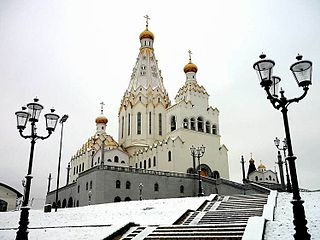
Christianity is the main religion in Belarus, with Eastern Orthodoxy being the largest denomination. The legacy of the state atheism of the Soviet era is evident in the fact that a part of the Belarusians are not religious. Moreover, other non-traditional and new religions have sprung up in the country after the end of the Soviet Union.

Christianity is the most adhered-to religion in Canada, with 19,373,330 Canadians, or 53.3%, identifying themselves as of the 2021 census. The preamble to the Canadian Charter of Rights and Freedoms refers to God. The French colonization beginning in the 17th century established a Roman Catholic francophone population in New France, especially Acadia and Lower Canada. British colonization brought waves of Anglicans and other Protestants to Upper Canada, now Ontario. The Russian Empire spread Orthodox Christianity in a small extent to the tribes in the far north and western coasts, particularly hyperborean nomads like the Inuit. Orthodoxy would arrive in mainland Canada with immigrants from the eastern and southern Austro-Hungarian Empire and western Russian Empire starting in the 1890s; then refugees from the Soviet Union, Eastern Bloc, Greece and elsewhere during the last half of the 20th century.

Estonia, historically a Lutheran Christian nation, is today one of the "least religious" countries in the world in terms of declared attitudes, with only 14 percent of the population declaring religion to be an important part of their daily life. This is thought to largely be a result of the Soviet occupation of Estonia in 1940, prior to which Estonia had a large Christian majority.
Christianity is predominant religion in Jamaica. Jamaica's laws establish freedom of religion and prohibit religious discrimination. According to the census of 2011, 69% of the population are Christians of various denominations, while 21% stated they had no religion.
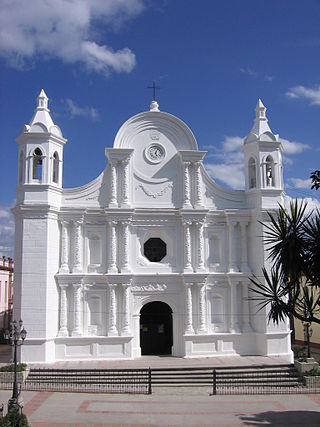
The predominant religion in Honduras is Christianity, with Catholicism and Evangelicalism being its main denominations. The country is secular and the freedom of religion is enshrined in the nation's constitution.
Eastern Orthodoxy in Guatemala refers to adherents, communities and organizations of Eastern Orthodox Christianity in Guatemala. Many of the Eastern Orthodox Christians in Guatemala are ethnic Mayas. Although the dominant religion in Guatemala is historically Roman Catholicism, in recent decades other Christian denominations have gained adherents there. Eastern Orthodox Christianity in particular has been growing rapidly, as a number of schismatic Catholic groups have expressed their desire to become Eastern Orthodox and have been received under the jurisdiction of Eastern Orthodox hierarchs. Currently, there are two distinct Eastern Orthodox communities in Guatemala, the Antiochian and the Constantinopolitan.
Oriental Orthodoxy in Guatemala refers to adherents of Oriental Orthodox Christianity in Guatemala. Most of the Oriental Orthodox Christians in Guatemala are ethnic Maya, who are under ecclesiastical jurisdiction of the Syriac Orthodox Church of Antioch.
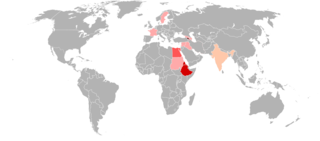
Oriental Orthodox Churches are the churches descended from those that rejected the Council of Chalcedon in 451. Despite the similar name, they are therefore a different branch of Christianity from the Eastern Orthodox. Oriental Orthodoxy consists of several autocephalous and autonomous jurisdictions holding a single set of beliefs and united in full communion. However, they each have their own separate rites, and there are significant differences between their respective practices. Thus, there is more internal diversity of practice among the Oriental Orthodox than among the Eastern Orthodox.
